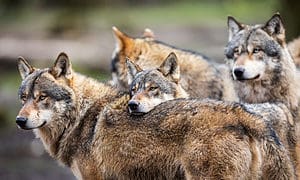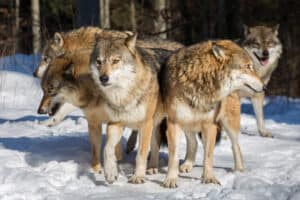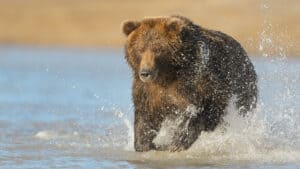Continue reading for our analysis...
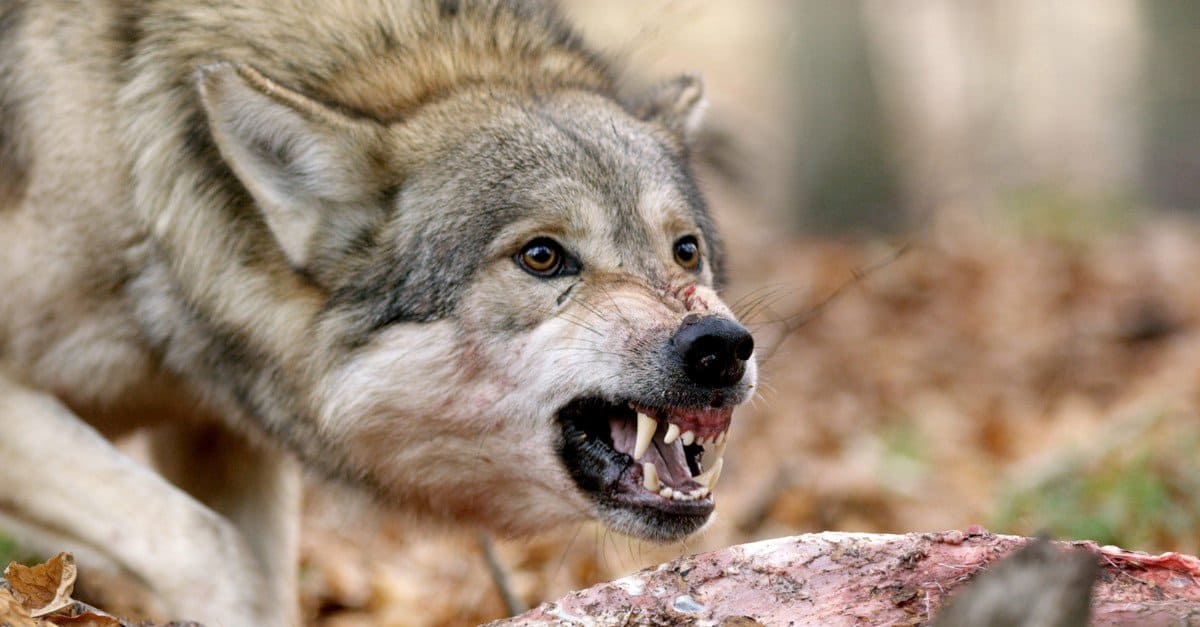
Key Points:
- Wolves sit pretty close to the top of the food chain.
- They are capable of weighing up to 160 lbs and reaching 6 feet in length.
- In spite of their ferocity and capacity for dealing damage, black bears, grizzlies, and wolves generally stay out of each others’ way.
Have you ever seen a dog chase a squirrel up a tree? Watch this video that is just like that but on a much larger scale! It’s an incredible sight! Two large bears have escaped a pack of wolves by climbing a tree. One bear makes its way down the trunk and attempts to walk off, but it is joined by at least two wolves who chase it back up the tree!
All About Wolves
Wolves are nearly always at the top of the food chain and are accomplished, predators. There are many distinct subspecies but they all live as packs which contain anything between four and 30 individuals. They are in the same family as domestic dogs and coyotes.
You can usually spot a wolf from its pointed ears, elongated snout, and bushy tail. They weigh up to 160 pounds and can be up to six feet in length. Hunting as a pack, they can target large hoofed animals like deer and elk. However, they will also eat smaller prey such as rabbits, mice, and beavers.
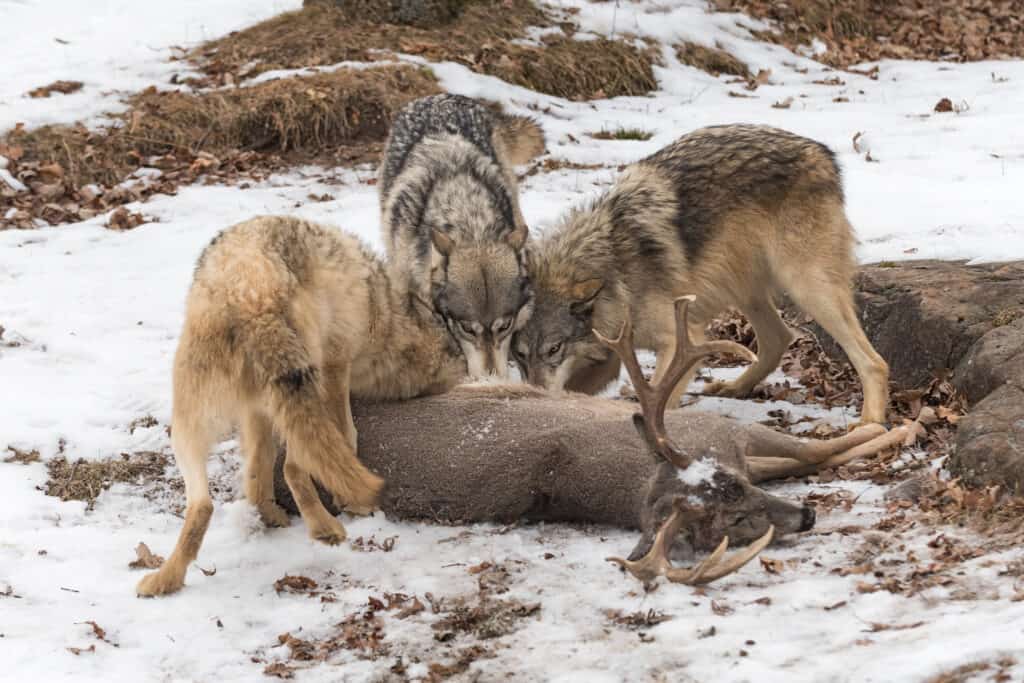
Wolves are pack animals who can target larger prey
©Geoffrey Kuchera/Shutterstock.com
Wolves and Bears
So, what is the deal between wolves and bears? On the face of it, a bear looks a bit too large for a wolf to tackle so you’d think that they’d leave them alone. Also, you’d think that bears would have nothing to fear from a wolf and would simply ignore this smaller animal. So, why are these two bears cowering up a tree when they are faced with a group of wolves?
We are not told where this particular clip was filmed but we can get some insights from the Yellowstone National Park Service, who have investigated interactions between bears and wolves. According to these experts, black bears, grizzly bears, and gray wolves have coexisted in much of the same range throughout large parts of North America in the past. Most of the time, they avoid each other.
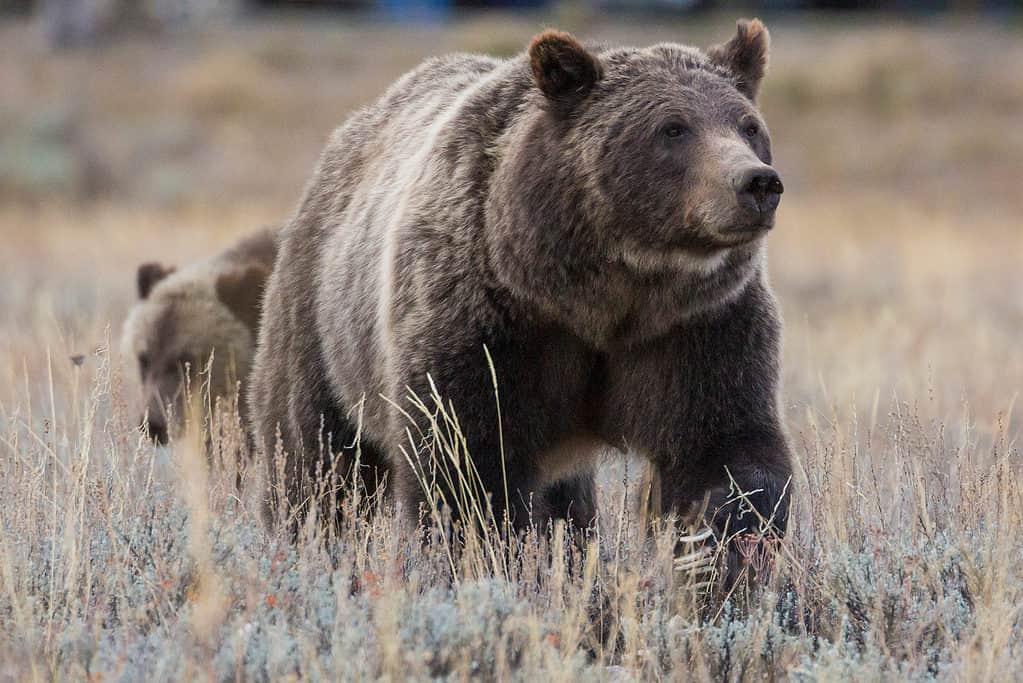
Wolves and bears have been seen fighting each other, however, it doesn’t happen as often as you’d think.
©BlueBarronPhoto/Shutterstock.com
However, there are many variables that dictate how the encounter will play out. The age and sex of all the animals involved are important as is the reproductive status. Some animals become much more aggressive if the prey is sparse and they are hungry. The number of animals involved in the encounter is also important. Animals learn from their experiences and their previous encounters with each other will affect how they behave when they meet that species again.
Perhaps these bears had suffered a previous adverse experience with wolves and that is why they are now hiding up a tree.
Is it Normal for Bears to Fear Wolves?
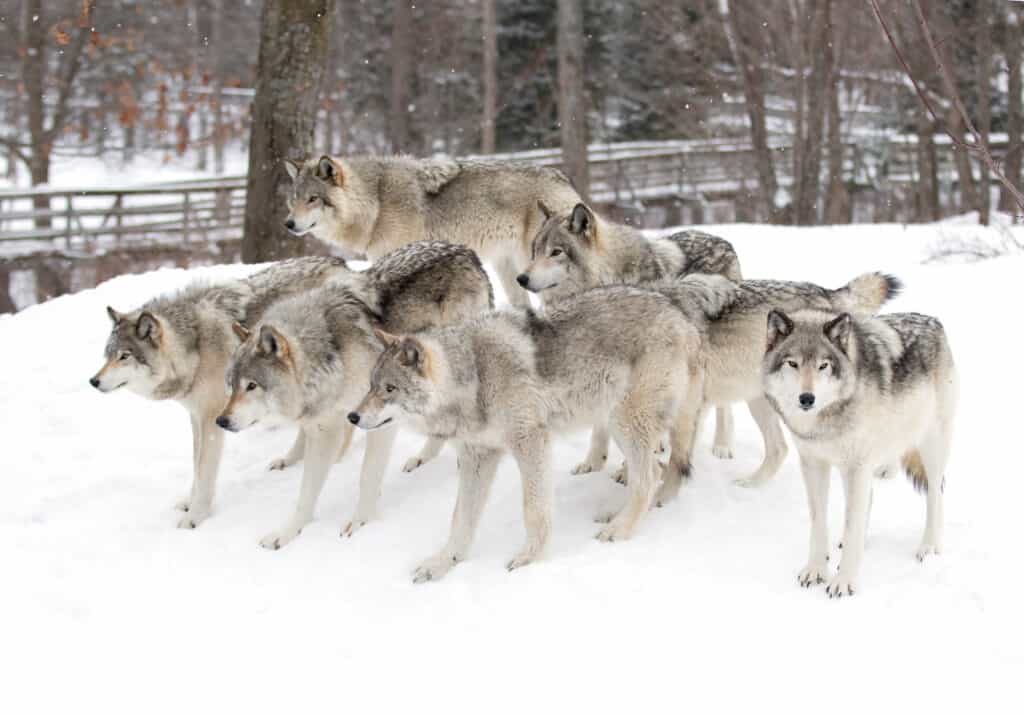
Wolves hunt in packs that enable them to tackle prey larger than themselves.
©Jim Cumming/Shutterstock.com
While there is no doubt that a single wolf would pose little threat to an animal as large and ferocious as a bear – a pack of wolves is another story. Is it normal for a bear to run from wolves? Not usually. The bears in the video appear to be young and inexperienced – perhaps only days away from going out on their own or even still under the protection of their mother. If a pack of wolves attempted to get the best of a full-grown adult bear – the bear would likely take them on.
A bear such as a grizzly can take out a wolf with one swipe of its powerful, daggered paw. Even if the wolves attempted to wear the mighty beast down – the bear could continue to take them down one by one with little damage to its thick hide. The bear may end up bloody and exhausted – but any member of the wolf pack that didn’t run away would be dead. The wolves in the video probably sensed the vulnerability of the two young bears and decided to risk the challenge.
Thank you for reading! Have some feedback for us? Contact the AZ Animals editorial team.



